Cucumber Growing Secrets unlocked! Have you ever dreamt of biting into a crisp, juicy cucumber, fresh from your own garden? I know I have! There’s something incredibly satisfying about nurturing a plant from seed to harvest, especially when that harvest is a delicious, versatile vegetable like the cucumber.
Cucumbers have a rich history, dating back thousands of years to their origins in India. They’ve been enjoyed by cultures around the world, from ancient Romans to modern-day foodies. But let’s be honest, sometimes growing these seemingly simple veggies can be a bit tricky. We’ve all been there – yellowing leaves, stunted growth, or a disappointing lack of fruit.
That’s why I’m so excited to share these cucumber growing secrets with you! This isn’t just another gardening guide; it’s a collection of tried-and-true DIY tricks and hacks that will help you achieve a bountiful cucumber harvest, even if you’re a beginner. Imagine impressing your friends and family with your homegrown cucumbers, perfect for salads, pickles, or a refreshing summer snack. Ready to ditch the store-bought cucumbers and grow your own? Let’s dive in!
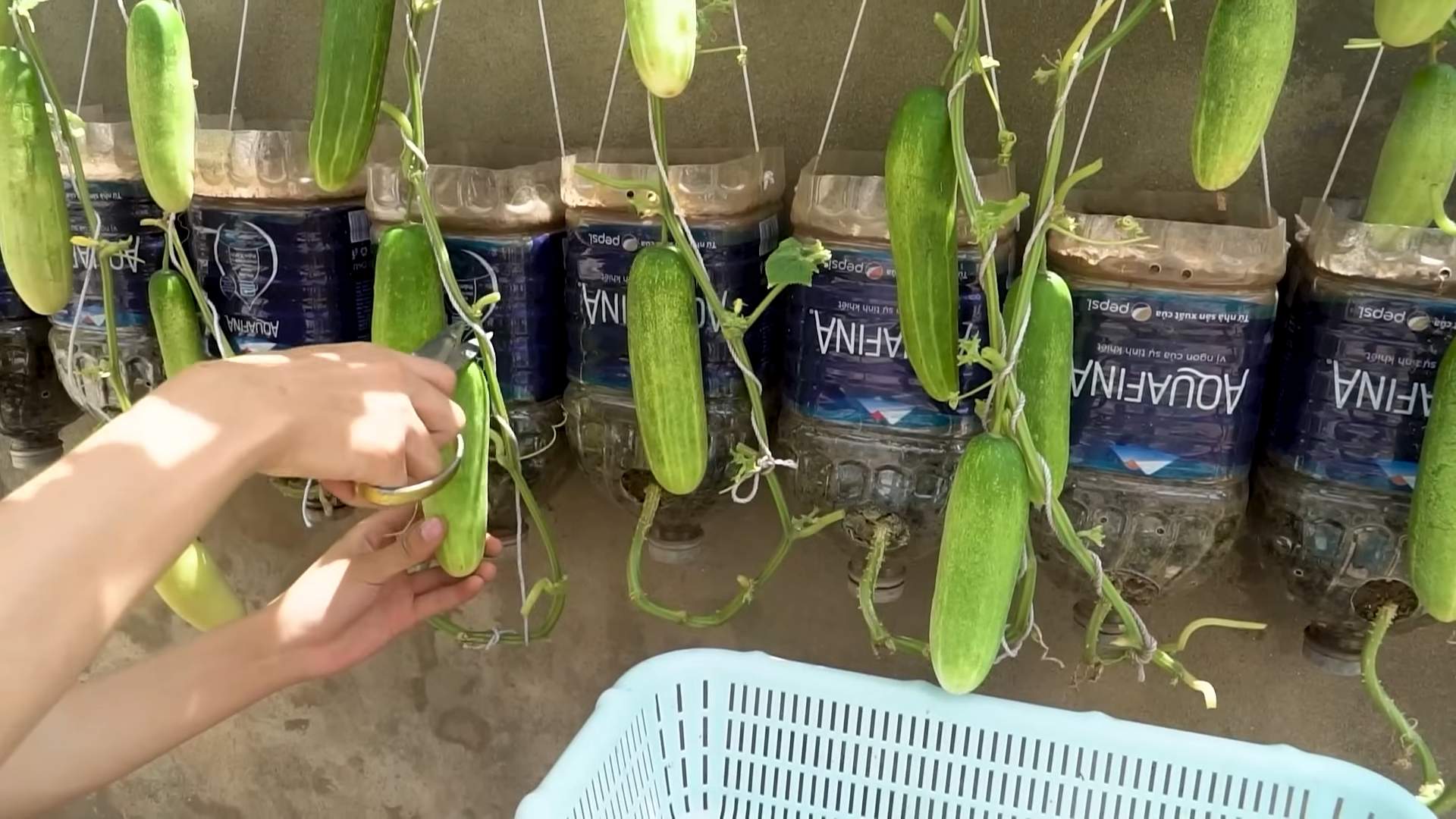
Unlocking the Secrets to a Bumper Cucumber Harvest: My DIY Guide
Okay, cucumber lovers, gather ’round! I’m about to spill all my secrets for growing the juiciest, crispiest, and most abundant cucumbers you’ve ever seen. Forget those bland, store-bought cukes – we’re talking homegrown goodness that will elevate your salads, pickles, and snacking game to a whole new level. This isn’t just about planting seeds; it’s about understanding what cucumbers crave and creating the perfect environment for them to thrive. So, grab your gardening gloves, and let’s get started!
Choosing the Right Cucumber Variety
Before we even think about soil, let’s talk varieties. Not all cucumbers are created equal! The best choice depends on what you plan to do with your harvest.
* Slicing Cucumbers: These are your classic salad cucumbers. They have smooth, dark green skin and a mild flavor. Think ‘Marketmore’ or ‘Straight Eight’.
* Pickling Cucumbers: Shorter and stubbier than slicing varieties, pickling cucumbers have bumpy skin and a slightly more intense flavor. ‘National Pickling’ and ‘Boston Pickling’ are popular choices.
* Burpless Cucumbers: If you’re sensitive to cucumbers, these are your best bet. They have thin skin and are easy to digest. ‘Sweet Success’ and ‘Armenian’ are great options.
* Bush Varieties: Perfect for smaller gardens or containers, bush cucumbers produce a good yield in a compact space. ‘Spacemaster’ and ‘Bush Champion’ are excellent choices.
Consider your space, your taste preferences, and how you plan to use your cucumbers when making your selection. I personally love growing a mix of slicing and pickling varieties so I have options!
Preparing the Perfect Cucumber Bed
Cucumbers are heavy feeders, meaning they need a lot of nutrients to produce those delicious fruits. Proper soil preparation is absolutely crucial.
* Sunlight: Cucumbers need at least 6-8 hours of direct sunlight per day. Choose a location in your garden that gets plenty of sunshine.
* Soil: Cucumbers prefer well-drained, fertile soil with a pH between 6.0 and 7.0.
* Compost: Amend your soil with plenty of compost. This will improve drainage, add nutrients, and help retain moisture. I usually add a generous layer of compost, about 2-3 inches thick, and work it into the top 6-8 inches of soil.
* Fertilizer: Incorporate a slow-release fertilizer into the soil at planting time. Look for a fertilizer that is high in phosphorus and potassium, which are essential for fruit production. A 5-10-10 fertilizer works well.
* Raised Beds (Optional): If you have heavy clay soil, consider growing your cucumbers in raised beds. This will improve drainage and make it easier for the roots to access nutrients.
Planting Your Cucumber Seeds or Seedlings
Now for the fun part – getting those cucumbers in the ground!
1. Starting Seeds Indoors (Optional): You can start cucumber seeds indoors about 3-4 weeks before the last expected frost. Sow the seeds in peat pots or biodegradable containers to avoid disturbing the roots when transplanting. Keep the soil moist and warm (around 70-80°F).
2. Direct Sowing: Once the soil has warmed up to at least 60°F, you can direct sow cucumber seeds in your garden. Plant the seeds about 1 inch deep and 2-3 feet apart.
3. Transplanting Seedlings: If you started your seeds indoors, harden them off by gradually exposing them to outdoor conditions for a week before transplanting. Plant the seedlings at the same depth they were growing in their containers, spacing them 2-3 feet apart.
4. Watering: Water the newly planted seeds or seedlings thoroughly. Keep the soil consistently moist, but not waterlogged.
5. Mulching: Apply a layer of mulch around the plants to help retain moisture, suppress weeds, and keep the soil cool. Straw, wood chips, or shredded leaves work well.
Providing Support: Trellising or Staking
Cucumbers are vines, so they need some kind of support to climb. Trellising or staking not only saves space but also improves air circulation, which helps prevent diseases.
* Trellising: A trellis is a great option for growing cucumbers vertically. You can use a commercially available trellis or build your own using wood or metal.
* Staking: For a simpler option, you can use stakes to support your cucumber plants. Insert the stakes into the ground near the plants and tie the vines to the stakes as they grow.
* Cages: Tomato cages can also work for bush varieties, providing support as the plant grows outwards.
I personally prefer trellising because it keeps the cucumbers off the ground, which reduces the risk of rot and makes them easier to harvest.
Watering and Fertilizing for Optimal Growth
Consistent watering and regular fertilization are essential for a bountiful cucumber harvest.
1. Watering: Cucumbers need about 1 inch of water per week. Water deeply and regularly, especially during hot, dry weather. Avoid overhead watering, which can promote fungal diseases. Drip irrigation or soaker hoses are ideal.
2. Fertilizing: Side-dress your cucumber plants with a balanced fertilizer every 2-3 weeks. You can also use a liquid fertilizer, such as fish emulsion or seaweed extract, to give them a boost.
3. Blossom-End Rot Prevention: Inconsistent watering can lead to blossom-end rot, a common problem in cucumbers. Make sure to water deeply and consistently, especially during fruit development. Adding calcium to the soil can also help prevent blossom-end rot. I sometimes add crushed eggshells around the base of the plants as a natural source of calcium.
Dealing with Pests and Diseases
Unfortunately, cucumbers are susceptible to a few pests and diseases. But don’t worry, with a little vigilance, you can keep your plants healthy and productive.
* Cucumber Beetles: These pesky beetles can damage leaves and spread diseases. Handpick them off the plants or use row covers to protect your cucumbers.
* Squash Bugs: Similar to cucumber beetles, squash bugs can also damage cucumber plants. Handpick them off the plants or use insecticidal soap.
* Powdery Mildew: This fungal disease causes a white, powdery coating on the leaves. Improve air circulation by pruning the plants and avoid overhead watering. You can also use a fungicide if necessary.
* Downy Mildew: Another fungal disease that can affect cucumbers. It causes yellow spots on the leaves. Improve air circulation and use a fungicide if necessary.
Regularly inspect your plants for signs of pests or diseases and take action promptly. Organic pest control methods are always the best option.
Pollination: Ensuring Fruit Set
Cucumbers need to be pollinated in order to produce fruit. Most cucumber varieties are monoecious, meaning they have separate male and female flowers on the same plant. The female flowers have a small cucumber behind them, while the male flowers do not.
* Bees: Bees are the primary pollinators of cucumbers. Attract bees to your garden by planting flowers that they love, such as lavender, sunflowers, and zinnias.
* Hand Pollination: If you’re not seeing many bees in your garden, you can hand-pollinate your cucumbers. Use a small paintbrush to transfer pollen from the male flowers to the female flowers. Do this in the morning, when the pollen is most viable.
Some newer cucumber varieties are parthenocarpic, meaning they don’t require pollination to produce fruit. These varieties are ideal for growing in greenhouses or areas with limited bee activity.
Harvesting Your Bumper Crop
The moment we’ve all been waiting for – harvesting those delicious cucumbers!
1. Timing: Harvest your cucumbers when they are the desired size and color. Slicing cucumbers are usually ready to harvest when they are about 6-8 inches long, while pickling cucumbers are ready when they are about 3-4 inches long.
2. Technique: Use a sharp knife or pruning shears to cut the cucumbers from the vine. Be careful not to damage the plant.
3. Frequency: Harvest your cucumbers regularly to encourage continued production. Overripe cucumbers will become bitter and seedy.
I love the feeling of harvesting a basket full of fresh, homegrown cucumbers. It’s the ultimate reward for all your hard work!
Extending the Harvest
Want to keep those cucumbers coming all season long? Here are a few tips:
* Succession Planting: Plant new cucumber seeds or seedlings every 2-3 weeks to ensure a continuous harvest.
* Pruning: Prune your cucumber plants to improve air circulation and encourage new growth. Remove any yellowing or diseased leaves.
* Fall Planting: In warmer climates, you can plant cucumbers in the fall for a second harvest.
Making the Most of Your Cucumber Harvest
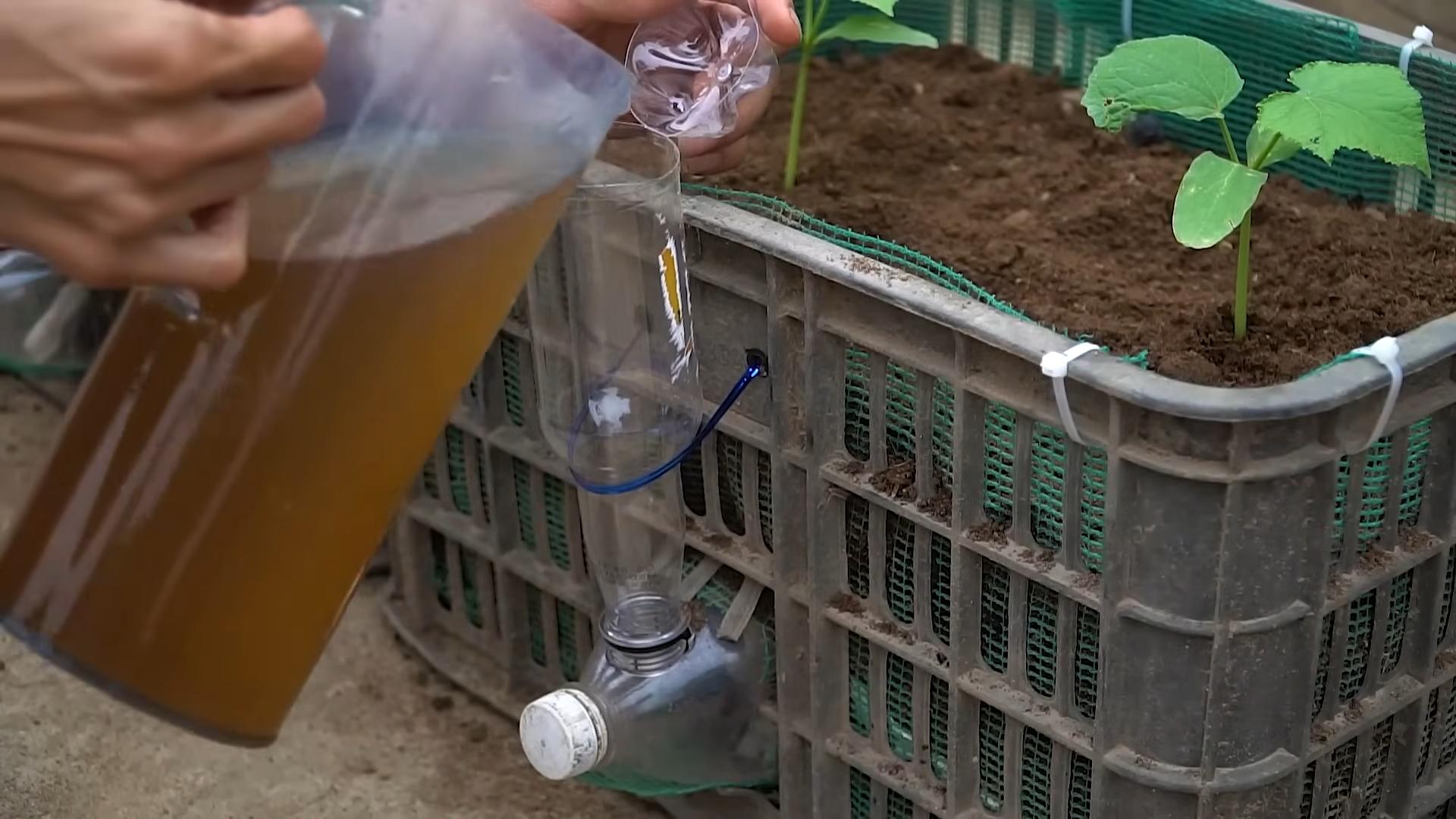
Conclusion
So, there you have it! Unlocking these cucumber growing secrets isn’t just about getting a few extra cucumbers; it’s about transforming your gardening experience. It’s about witnessing the incredible potential of your plants and enjoying the unparalleled taste of homegrown produce. By implementing these simple yet effective techniques, you’re not just growing cucumbers; you’re cultivating a thriving garden ecosystem.
The beauty of these methods lies in their adaptability. Feel free to experiment with different companion plants. Try interplanting your cucumbers with dill, marigolds, or nasturtiums to see which combination works best in your specific garden environment. Consider using different types of organic fertilizers to find the nutrient blend that your cucumbers respond to most favorably. Perhaps you’ll discover that adding a touch of Epsom salts to the soil gives your plants an extra boost of magnesium, resulting in even more abundant yields.
Don’t be afraid to get creative with your trellising system. While a simple A-frame trellis works wonders, you might want to explore vertical gardening options like using repurposed pallets or building a more elaborate structure. This not only maximizes space but also adds a visually appealing element to your garden.
Remember, gardening is a journey of continuous learning and discovery. There will be successes and setbacks along the way, but each experience provides valuable insights that will help you become a more skilled and confident gardener. The key is to stay curious, be patient, and never stop experimenting.
We strongly encourage you to try these cucumber growing secrets in your own garden. The results, we believe, will speak for themselves. Imagine biting into a crisp, juicy cucumber that you’ve nurtured from seed to harvest. The flavor is simply unmatched by anything you can find in a store.
But the benefits extend beyond just the taste. Growing your own cucumbers is a rewarding and fulfilling activity that connects you to nature and provides a sense of accomplishment. It’s also a sustainable way to reduce your carbon footprint and support local food systems.
So, grab your seeds, prepare your soil, and get ready to embark on a cucumber-growing adventure. We’re confident that you’ll be amazed by what you can achieve. And most importantly, don’t forget to share your experiences with us! We’d love to hear about your successes, challenges, and any unique variations you’ve discovered. Share your photos, tips, and stories in the comments below. Let’s create a community of cucumber enthusiasts who are passionate about growing the best possible produce. Happy gardening!
Frequently Asked Questions (FAQ)
What kind of soil is best for growing cucumbers?
Cucumbers thrive in well-drained, fertile soil that is rich in organic matter. The ideal soil pH is between 6.0 and 7.0. Before planting, amend your soil with compost, aged manure, or other organic materials to improve its structure and nutrient content. If your soil is heavy clay, consider adding sand or perlite to improve drainage. A soil test can provide valuable insights into your soil’s specific needs and help you make informed decisions about amendments.
How often should I water my cucumber plants?
Cucumbers require consistent moisture, especially during hot weather and fruit development. Water deeply and regularly, aiming for about 1 inch of water per week. Avoid overhead watering, as this can lead to fungal diseases. Instead, water at the base of the plants or use a soaker hose or drip irrigation system. Check the soil moisture regularly by sticking your finger into the soil about an inch deep. If the soil feels dry, it’s time to water. Mulching around your cucumber plants can help retain moisture and suppress weeds.
What are some common pests and diseases that affect cucumbers, and how can I prevent them?
Cucumbers are susceptible to several pests and diseases, including cucumber beetles, squash bugs, aphids, powdery mildew, and downy mildew. To prevent these problems, practice good garden hygiene, such as removing plant debris and weeds regularly. Encourage beneficial insects like ladybugs and lacewings, which prey on aphids and other pests. Use row covers to protect young plants from pests. Choose disease-resistant cucumber varieties. If you notice signs of pests or diseases, take action promptly. Insecticidal soap or neem oil can be effective against many common pests. For fungal diseases, use a copper-based fungicide or a baking soda solution.
How do I know when my cucumbers are ripe and ready to harvest?
Cucumber maturity depends on the variety, but generally, cucumbers are ready to harvest when they are firm, green, and have reached the desired size for their type. Check the seed packet or plant tag for specific information about the expected size and color of your cucumbers. Overripe cucumbers will turn yellow or orange and become seedy and bitter. Harvest cucumbers regularly to encourage continued production. Use a sharp knife or pruning shears to cut the cucumbers from the vine, leaving a short stem attached.
Can I grow cucumbers in containers?
Yes, cucumbers can be successfully grown in containers, provided you choose a large enough container (at least 5 gallons) and provide adequate support for the vines. Use a well-draining potting mix and fertilize regularly. Choose bush or compact cucumber varieties, which are better suited for container gardening. Place the container in a sunny location and water frequently, as containers tend to dry out more quickly than garden beds. A trellis or stake will help support the vines and keep the cucumbers off the ground.
What are the benefits of trellising cucumbers?
Trellising cucumbers offers several advantages. It saves space in the garden, improves air circulation, reduces the risk of fungal diseases, and makes harvesting easier. Trellising also allows the cucumbers to grow straight and evenly, resulting in higher-quality fruit. There are many different types of trellises you can use, including A-frame trellises, vertical trellises, and even repurposed materials like pallets or cattle panels.
How can I improve pollination of my cucumber plants?
Cucumbers are typically pollinated by bees and other insects. To attract pollinators to your garden, plant flowers that are rich in nectar and pollen, such as sunflowers, zinnias, and lavender. Avoid using pesticides that can harm pollinators. If you’re growing cucumbers indoors or in a greenhouse, you may need to hand-pollinate the flowers. To do this, use a small paintbrush to transfer pollen from the male flowers to the female flowers. Female flowers have a small cucumber-like structure at the base, while male flowers do not.
What are some good companion plants for cucumbers?
Companion planting can benefit cucumbers by attracting beneficial insects, repelling pests, and improving soil health. Some good companion plants for cucumbers include:
* **Marigolds:** Repel nematodes and other pests.
* **Nasturtiums:** Attract aphids away from cucumbers.
* **Dill:** Attracts beneficial insects and repels cabbage moths.
* **Radishes:** Repel cucumber beetles.
* **Beans:** Fix nitrogen in the soil, which benefits cucumbers.
* **Corn:** Provides shade and support for cucumber vines.
Avoid planting cucumbers near aromatic herbs like sage, as they can inhibit cucumber growth.
How do I save cucumber seeds for next year?
Saving cucumber seeds is a great way to preserve your favorite varieties and save money. To save cucumber seeds, allow a few cucumbers to ripen fully on the vine until they turn yellow or orange. Cut the cucumbers open and scoop out the seeds and pulp. Place the seeds and pulp in a jar with water and let it ferment for a few days. This will help remove the gelatinous coating around the seeds. After fermentation, rinse the seeds thoroughly and spread them out on a paper towel to dry completely. Store the dried seeds in an airtight container in a cool, dark, and dry place.
Why are my cucumber flowers falling off without producing fruit?
This is a common problem called blossom drop, and it’s often caused by stress factors such as temperature fluctuations, insufficient pollination, or nutrient deficiencies. Ensure your cucumber plants are getting consistent moisture and are not exposed to extreme temperatures. Attract pollinators to your garden by planting flowers and avoiding pesticides. Fertilize your plants regularly with a balanced fertilizer. If you suspect poor pollination, try hand-pollinating the flowers.

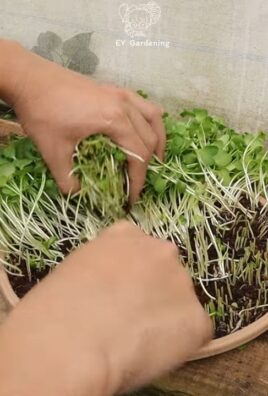
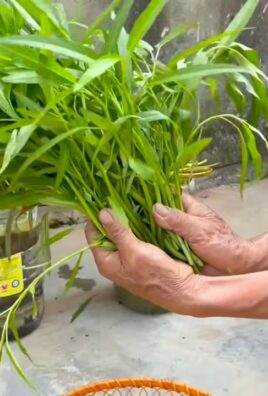
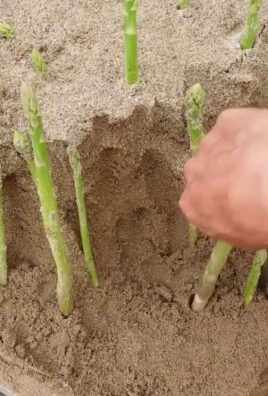
Leave a Comment